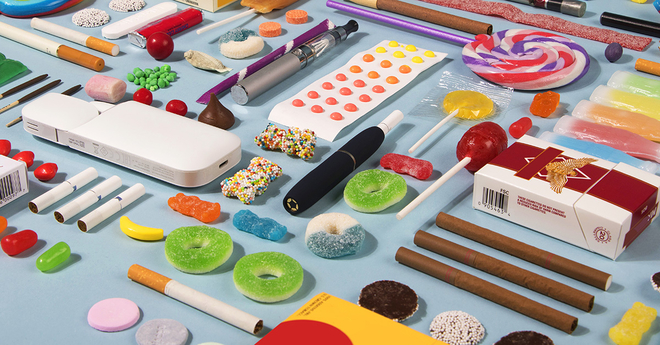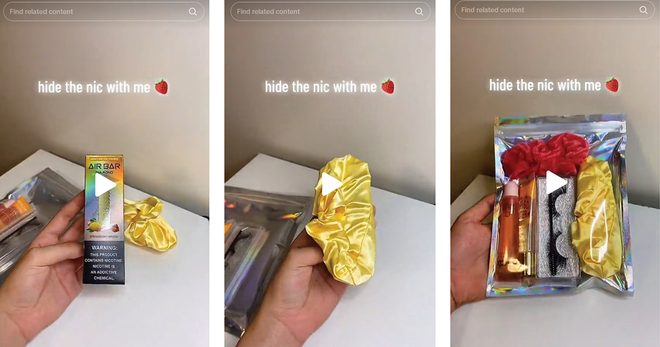4 key factors the FDA must consider during its first e-cigarette review
The youth e-cigarette epidemic could have been prevented if the Food and Drug Administration had done its job of evaluating the health impacts of e-cigarettes before they were allowed on the market. After ruling that the FDA acted illegally in delaying the required review of e-cigarettes, a federal judge set a deadline of May 12, 2020, for e-cigarette manufacturers to submit their products to the agency for review. Flavored tobacco products may even come off the market sooner if the administration follows through on its proposal announced in September 2019. In anticipation of the 2020 date or an FDA order to remove products, some companies are trying to get ahead of the deadline.
Reynolds American, Inc. announced Oct. 11, 2019, that it had submitted an application for its Vuse Solo e-cigarette product, making it one of the first manufacturers to do so. The product comes in many fruit and mint flavors, including melon, chai, tropical, mint, menthol, crema, berry and nectar.
As the FDA combs through the reported 150,000 pages of the Vuse application, it should be careful not to repeat the same mistakes made in its recent decision to allow Philip Morris International to begin marketing and selling the electronic heated tobacco device IQOS in the U.S. Weaknesses stemming from that decision highlight important considerations the FDA needs to make in its Vuse review to prevent the continued escalation of the youth e-cigarette epidemic and properly protect public health.

Youth perception and usage data
Do teens vape iqos
The IQOS application included almost no information about youth perceptions of the product, meaning that the FDA gave its approval without a full picture of how IQOS would appeal to youth — a key component of the public health standard by which all tobacco products must be measured.
The IQOS application provided no data on perceptions of the product among U.S. youth, and scant data about youth perceptions and uptake of the product in countries where it was sold at the time. While PMI claimed in its IQOS application it would be unethical to conduct research with young people, Big Tobacco is essentially doing that today in the U.S. on an enormous scale by continuing to market unauthorized e-cigarettes. With the long-term health effects of e-cigarettes unknown and serious, even deadly, short-term effects an emerging issue, millions of young people who vape (27.5% of high school students, according to preliminary data from the 2019 National Youth Tobacco Survey) are being treated like test subjects.
When the FDA reviews e-cigarette applications, it must ensure that manufacturers provide sufficient information about current youth use of the product and the likelihood of future youth use. Companies must also provide information about their marketing plans, including youth perceptions of those plans and intended behavior based on them. Years of research on tobacco products has shown that positive perceptions of product marketing increases the likelihood that youth will start using a product.
Consideration of flavors
Are teens only vaping flavored e-cigarettes
The youth e-cigarette epidemic in the U.S. and the appeal of flavored e-cigarettes to youth go hand-in-hand. Ninety-seven percent of youth e-cigarette users report using a flavored product in the past month and 70% cite flavors as the reason for their use. E-cigarettes come in thousands of flavors, from mint and menthol to cotton candy and gummy bear.
Given the state of the youth e-cigarette epidemic, we strongly support the administration’s proposal to remove flavored e-cigarettes from the market pending an FDA review. The burden should always have been on manufacturers to show that their products would not appeal to youth before going to market, instead of after. It’s now clear that the manufacturer’s burden should he very heavy indeed. It’s difficult to imagine any set of circumstances where a cotton candy, strawberry shortcake or unicorn vomit flavored product could meet either the “safe and effective” standard for a therapeutic device or the public health standard of the Tobacco Control Act. At a minimum, an e-cigarette manufacturer should show that the flavor itself is safe, helps smokers switch completely from combustible cigarettes, and does not attract youth before a product is allowed to go to market.
Despite the disturbing relationship between flavors and e-cigarette use, PMI did not supply separate information on the public health impact of the two menthol versions of IQOS HeatSticks, the mini cigarette-like rolls of tobacco that the product heats to produce an inhalable aerosol. In fact, the manufacturer only used non-menthol HeatSticks to test intentions to try and use IQOS in a study of young adults despite the fact that menthol cigarettes have been shown to be a starter product for young people, and that menthol makes cigarettes easier to smoke and harder to quit.
We contend the FDA’s approval of flavored IQOS HeatSticks was deeply flawed due to this lack of data. And, we urge the FDA not make this mistake again. The Vuse Solo product, for example, comes in at least eight flavors — most fruity, minty or dessert-like. It’s critical that the FDA review the public health impact of each of these flavors carefully and separately with strong backing of data.

Product safety and whether it contains toxic ingredients
Do e-cigarettes contain harmful or toxic ingredients
Given that we do not know the long-term impacts of e-cigarettes, all e-cigarette manufacturers must provide data on exposure to all harmful ingredients the FDA identifies both in the product and in the aerosol.
Applicants must also provide data on whether the product causes or has the potential to cause disease. When reviewing the IQOS application, the FDA ignored the concerns multiple scientists raised that the product was not safer than a cigarette and that it still had potential to cause disease. In fact, there were several peer-reviewed studies questioning the manufacturer’s claims that IQOS was less toxic than cigarettes. This consideration is especially important given that nearly 1,500 illnesses and injuries and 33 deaths associated with e-cigarette use have been reported since Oct. 17, 2019. While many cases of lung illness report use of e-cigarettes containing THC, more than half of the cases also report use of nicotine-containing e-cigarettes. Furthermore, the evidence base regarding health effects of e-cigarettes continues to show that these products are far from safe. Multiple studies now show links between e-cigarette use and a number of inflammatory diseases of the respiratory system, like pneumonia and interstitial lung disease, as well as increased odds of chronic cough, bronchitis and asthma. Similarly, new studies show preliminary evidence that e-cigarettes may increase users’ chances of stroke, heart attack and coronary heart disease.
Rates of using both e-cigarettes and cigarettes together, which is not switching
Should you switch completely to e-cigarettes from cigarettes
Using more than one tobacco product is called “dual use.” Products that are less harmful than cigarettes and help smokers quit or switch completely from combustible tobacco could potentially benefit public health. While some combustible tobacco smokers may experience a brief period of dual use in the process of switching completely to a less harmful product, dual use can be just as harmful, and sometimes more harmful, than regular cigarette smoking.
Many scientists and public health groups, including Truth Initiative®, criticized the IQOS application because all of the studies the manufacturer conducted showed significant amounts of dual use and very few instances of complete switching to IQOS from combustible cigarettes. Dual use is also very common among e-cigarette users. Some studies have shown that dual use of e-cigarettes and combustible cigarettes actually increases risk for some of the diseases associated with cigarette smoking. The FDA must require that e-cigarette pre-market applications clearly delineate dual use behavior, including amount and duration, and heavily consider this information in its determination of public health benefit.
The FDA failed to take action to prevent the youth e-cigarette epidemic. Additionally, it made mistakes when it reviewed the IQOS application. The agency must consider these key factors during its product reviews of e-cigarettes to correct those mistakes in all applications in the future, prevent the e-cigarette crisis from getting worse and shift this disturbing trend in the opposite direction — preventing youth initiation and helping smokers quit.
For more information about e-cigarettes, explore our other articles on the topic.



